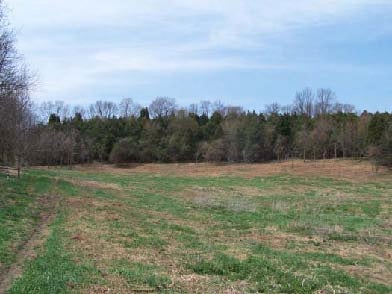
La página que intenta visitar sólo está disponible en inglés. ¡Disculpa!
The page you are about to visit is currently only available in English. Sorry!


Just a few months ago, this site was overrun with invasive plants. By August, after the restoration work, native plants, like this blue vervain, were reappearing.
Photo courtesy of John Parke
A few years ago my family was approached by John Parke, a stewardship project director for the New Jersey Audubon Society (NJAS). He wanted to see if we had any interest in getting involved in conservation programs on our farm in Warren County, in western New Jersey. I have seven siblings (and we run the farm in partnership), and getting everyone to agree on things can be a challenge. This, however, was a no-brainer for us.
I had once written for the magazine about conservation programs on working lands that are funded through the federal farm bill (see “Green Acres,” November-December 2005). So naturally the idea of doing conservation work on the farm had occurred to me. How, though, to do it? Even if we had some answers, we had more questions: What should our specific conservation goals be? Which program would be most appropriate for us? Should we approach the local NRCS office (was there even a local NRCS office?) or look into a state/county/local/NGO option instead? Would a program interfere with the actual farming on the place? The prospect of trying to turn a worthy notion into useful practice was, frankly, bewildering, maybe even a little daunting. Would this, then, end up as one of those good ideas that go on the back burner for a while and then are abandoned altogether?
John’s over-the-transom approach was our perfect solution, and after we expressed interest, he pretty much did the rest. He essentially played the role of consultant—a tireless and unpaid (by us) one, at that!—guiding us through the entire process. He did the site assessment and figured out what our goals should be. He figured out what programs we should apply for through which agencies. He got us the applications and then basically filled them out for us. He found the people and equipment needed to do the actual restoration work. He even arranged to have the work financed by NJAS (we paid them back when we got reimbursed by the NRCS). He oversaw the projects, to make sure everything was done properly. And he continues to monitor our situation today.
We now participate in the following.
• Wildlife Habitat Incentives Program (WHIP). This program, funded by the Natural Resources Conservation Service (part of the USDA), is for native grassland restoration to benefit ground-nesting birds. This included (non-chemical) invasive plant removal and the planting of such grasses as Indian grass, little blue stem and big blue stem.

Before: Multiflora rose, autumn olive, and mile-a-minute weed had been overrunning the meadow.

After: The meadow was cleared. The farm is run organically, and all invasives removal was done mechanically, without using herbicides. Photos by John Parke
• Landowner Incentive Program (LIP). With funding from the N.J. Division of Fish & Wildlife, we created three nesting areas for turtles, including the wood turtle, a threatened species in the state.
• Partners for Fish and Wildlife Program (Partners). This U.S. Fish and Wildlife Service program provided nest boxes for bluebirds, American kestrels, and wood ducks.
• Jacobsburg Environmental Education Center, in Wind Gap, Pennsylania, supplied a barn owl nest box through the Delaware Valley Barn Owl Re-establishment Project.
Matt Pearson and Tara Bower, who farm on our property, enrolled themselves in the Environmental Quality Incentives Program (EQIP). They use the funding to support their prescribed grazing, nutrient management, and contour farming efforts.
You can do something like this on your property. You really can. Yes, we were lucky when John showed up. But there are plenty of others out there who want to help. Talk to your local NRCS office about the farm bill. With budget cuts, they’re likely stretched thin. But they’re pros, and they care about doing good conservation. Talk to your state’s fish and game department. Talk to your local Audubon chapter. There are people who want to guide you on your way. Sometimes all you have to do is say yes.